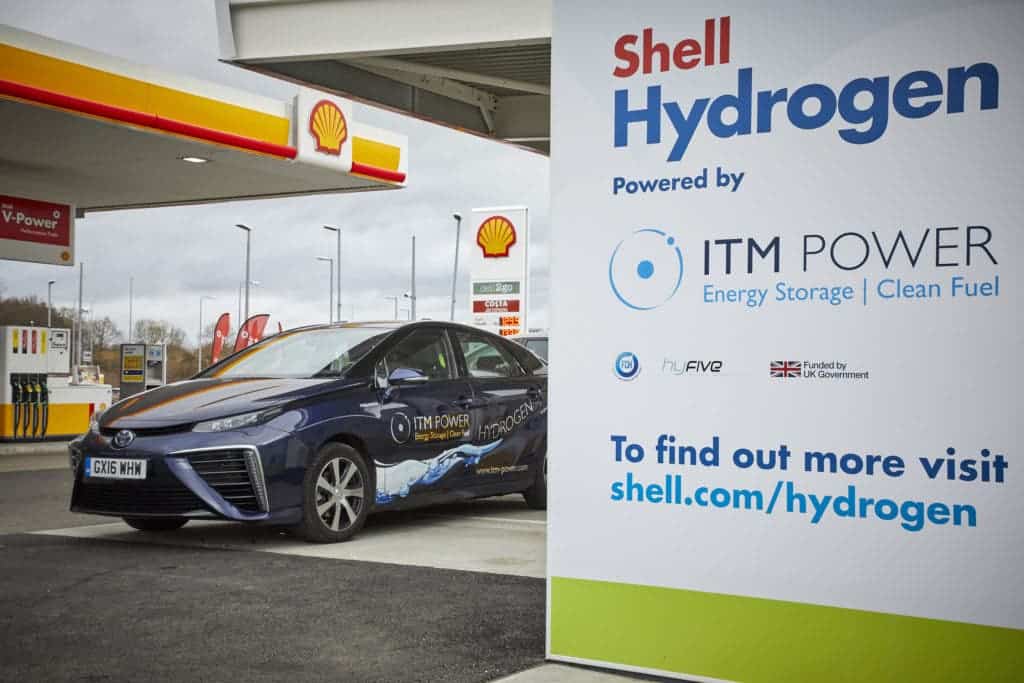Inspired by human lungs, researchers at Stanford University have created a bio-mimicking device that makes clean hydrogen fuel by splitting water molecules. The lung-like apparatus could improve the efficiency of fuel cells, which are used to power hydrogen vehicles or even cities.

By the time you finished reading the previous sentence, you must have inhaled and exhaled a couple of times, which didn’t even consciously register. But just because breathing is automatic doesn’t mean it’s simple. Our breathing system is consists of very sophisticated biological machinery that enables two-way gas exchange. When we breathe in, air moves through tiny pores called bronchioles until it reaches the alveoli — small sacs at the end of the respiratory tree where carbon dioxide leaves the blood and oxygen enters it.
The alveoli have a unique structure composed of a micron-thick membrane that repels water on the inside but attracts it on the outer surface. This way, harmful bubbles are prevented from forming, allowing oxygen to pass into the bloodstream safely and highly efficiently.
Scientists at Stanford University mimicked the structure of the alveoli in order to come up with better electrocatalysts — materials that increase the rate of a chemical reaction at an electrode — for both electrolysis (splitting water into hydrogen and oxygen) and fuel cells (that run in reverse, ‘burning’ hydrogen for energy and outputting water as a byproduct).
“Clean energy technologies have demonstrated the capability of fast gas reactant delivery to the reaction interface, but the reverse pathway–efficient gas product evolution from the catalyst/electrolyte interface–remains challenging,” says Jun Li, the first author of the study.
The team led by Yi Cui, a professor of material science and engineering at Stanford, first made a 12-nanometer-thick plastic film with tiny pores on one side — this repels water. On the other side of the material, gold and platinum nanoparticles were added, which speed up chemical reactions. Finally, the film was rolled with the metal layer on the inside and sealed at the edges.

To demonstrate their system, the researchers first split water into its constituent parts: hydrogen and oxygen. The gases then traveled through the lung-like device without the energy costs of forming bubbles, unlike the carbon-based films that are usually used in fuel cells. This part of the process resembles exhalation.
That’s not all. Oxygen gas is delivered to a catalyst at the electrode surface, so it can be used as a reactant during electrochemical reactions. Through a reaction that consumes oxygen, energy can be generated. This process is akin to inhalation.
Ultimately, the lung-like apparatus was 32% more efficient at converting energy than the same membrane in a flat configuration, which highlights the importance of geometry.
What was particularly impressive was the system’s robustness and stability. The lung-like system retained 97% of its catalytic activity after 250 hours of use, whereas a conventional carbon-based membrane decayed to 74% in just 75 hours of activity.
All of these findings are extremely promising, although there is also room for improvement. The nano-polyethylene membrane used in the study degrades at temperatures higher than 100 degrees Celsius, making it unsuitable for a range of applications. The researchers are now trying out other nanoporous membranes that have better heat tolerance.
“The breathing-mimicking structure could be coupled with many other state-of-the-art electrocatalysts, and further exploration of the gas-liquid-solid three-phase electrode offers exciting opportunities for catalysis,” says Jun Li.


